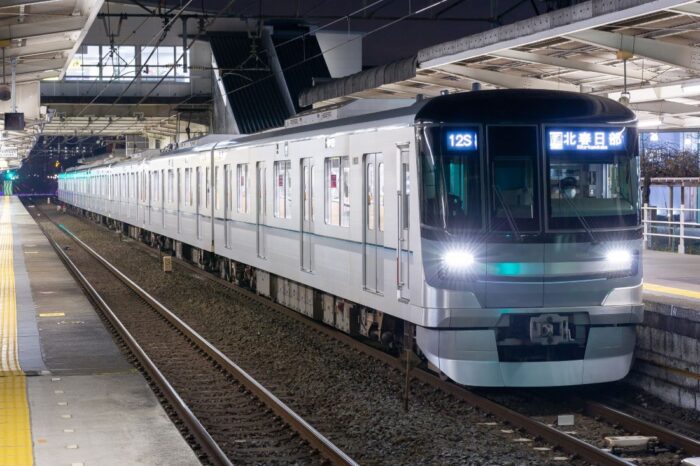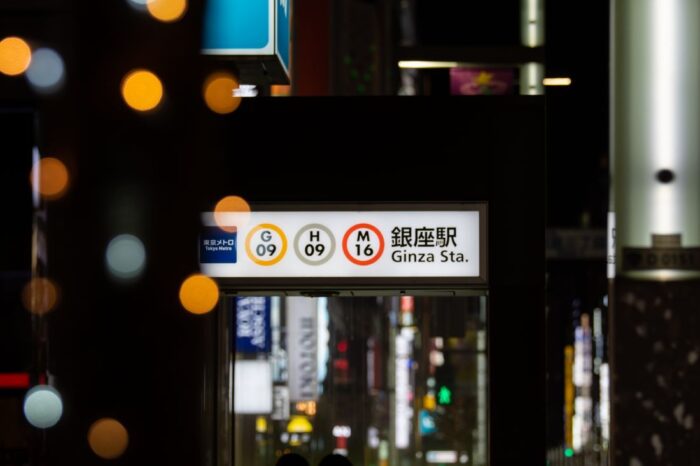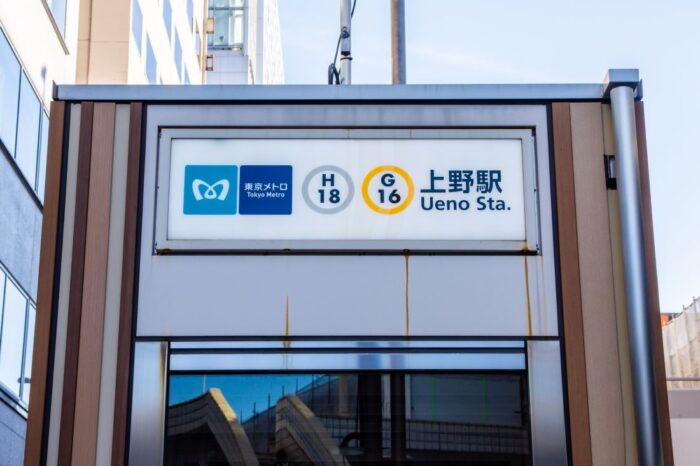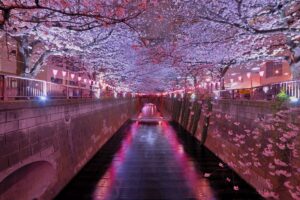The Tokyo Metro Hibiya Line is a vital subway line that traverses Tokyo’s bustling city center, connecting major business districts, shopping areas, and tourist attractions.

With 21 stations stretching over 20.3 km, the Hibiya Line is one of the busiest and most important subway lines in Tokyo. It runs from Naka-Meguro in the southwest to Kita-Senju in the northeast, passing through major hubs such as Roppongi, Ginza, and Akihabara.

For visitors to Tokyo, the Hibiya Line gives you easy access to some of the city’s most popular attractions.
In this in-depth guide, we will take a closer look at the Hibiya Line, exploring its history, route, stations, and notable attractions along the way.
History of the Hibiya Line

The Hibiya Line is one of the oldest subway lines in Tokyo. It was opened on March 29, 1961, and was the fourth subway line built in Tokyo after the Ginza Line, Marunouchi Line, and Toei Asakusa Line. The basic plan for the Hibiya Line was drawn up by the Ministry of Transportation in 1957, and construction began in 1959.
it was built to connect Naka-Meguro and Kita-Senju, two of the busiest areas in Tokyo. The line is 20.3 kilometers long and has 22 stations. It is a vital part of Tokyo’s subway system and serves millions of passengers every day.
In 1982, the line was extended from Naka-Meguro to Ebisu, and in 2008, it was extended from Kita-Senju to Minami-Kurihashi. The line has also been equipped with modern facilities, including platform screen doors, digital signage, and air conditioning.
Route Map and Stations

The Hibiya Line, also known as Line H, is one of the lines that runs from Naka-Meguro Station in the southwestern part of Tokyo to Kita-Senju Station in the northeast. The line is colored silver on the Tokyo Metro map and has a total of 21 stations.
The line intersects with several other Tokyo Metro lines, including the Tozai Line, Chiyoda Line, and Yurakucho Line, as well as the JR Yamanote Line at Ebisu Station. This makes it a convenient line for getting around town.
Below is a table of all the stations on the Hibiya Line:
| Station Name | Transfers |
|---|---|
| Naka-Meguro | |
| Ebisu | JR Yamanote Line, Saikyo Line, Shonan-Shinjuku Line |
| Hiroo | |
| Roppongi | |
| Kamiyacho | |
| Toranomon | |
| Kasumigaseki | Chiyoda Line, Marunouchi Line |
| Hibiya | Chiyoda Line |
| Ginza | Marunouchi Line, Hanzomon Line |
| Higashi-Ginza | Asakusa Line |
| Tsukiji | |
| Hatchobori | Keiyo Line |
| Kayabacho | Tozai Line |
| Ningyocho | Hanzomon Line, Toei Asakusa Line |
| Kodemmacho | |
| Akihabara | JR Yamanote Line, Keihin-Tohoku Line, Sobu Line, Chuo-Sobu Line |
| Naka-Okachimachi | |
| Ueno | JR Yamanote Line, Keihin-Tohoku Line, Tohoku Shinkansen, Joetsu Shinkansen, Hokkaido Shinkansen, Yamagata Shinkansen, Akita Shinkansen, Hokuriku Shinkansen, Joban Line, Utsunomiya Line, Takasaki Line, Keisei Main Line |
| Iriya | |
| Minowa | |
| Mikawashima | |
| Kita-Senju | JR Joban Line, Tobu Skytree Line, Tsukuba Express |
As you can see, the Hibiya Line covers many popular tourist destinations, such as Roppongi, Ginza, and Akihabara, as well as major transportation hubs like Ueno Station.
Fares and Tickets

The fares for the Hibiya Line are based on the distance traveled. The minimum fare is 170 yen, and the maximum fare is 320 yen. The fare increases in increments of 10 yen for every additional station traveled. For example, the fare for traveling three stations is 200 yen, while the fare for traveling seven stations is 270 yen.
There are several types of tickets available for use on the Hibiya Line, including single tickets, day passes, and IC cards. Single tickets are the most basic type of ticket and are valid for one trip only. They can be purchased at the ticket vending machines located in all Hibiya Line stations.
Day passes are a convenient option for tourists who plan to use the Hibiya Line frequently during their stay in Tokyo. The Tokyo Subway Ticket is a popular day pass for international visitors that allows unlimited travel on all Tokyo Metro and Toei Subway lines, including the Hibiya Line, for 24, 48, or 72 hours.
IC cards, such as Suica and Pasmo, are rechargeable smart cards that can be used on all public transportation in Tokyo, including the Hibiya Line. They can be purchased at the ticket vending machines and charged with any amount of money. The fare is automatically deducted from the card when it is tapped at the ticket gate. IC cards are convenient for frequent travelers as they eliminate the need to purchase a single ticket every time they use the subway.
Tips for Riding the Hibiya Line
Here are some tips to make your ride smoother:
- Buy a Tokyo Subway Pass or a Suica card for easy and convenient payment. These cards can be used on all Tokyo subway lines and buses.
- Be mindful of rush hour. The Hibiya Line can get very crowded during peak hours, so try to avoid riding during these times if possible.
- Stand on the left side of the escalator if you’re not walking. This allows people in a hurry to pass on the right.
- Be aware of the train schedule. The Hibiya Line runs from early morning until late at night, but the frequency of trains may vary depending on the time of day.
Attractions Near Hibiya Line Stations
Here are some attractions near Hibiya Line stations:
Nakameguro

Nakameguro station is a popular spot during cherry blossom season. The Meguro River that runs through the area is lined with cherry blossom trees, making it a beautiful sight to see. There are also many cafes, restaurants, and shops in the area.
Ebisu
Ebisu is a trendy area that is known for its high-end restaurants and bars. It is also home to the Yebisu Garden Place, a shopping and entertainment complex that features a museum, a beer museum, and shops and restaurants.
Ginza

Ginza is a shopping district that is known for its high-end boutiques and department stores. It is also home to many theaters and galleries, making it a great place to catch a show or see some art.
Hibiya Park
Hibiya Park is a large park that is located near Hibiya station. It features gardens, fountains, and statues, making it a great place to relax and enjoy nature. The park also hosts events throughout the year.
Ueno Park

Ueno Park is a large park that is located near Ueno station. It is home to many museums, including the Tokyo National Museum and the National Museum of Nature and Science. The park is also known for its cherry blossom trees and its zoo.






